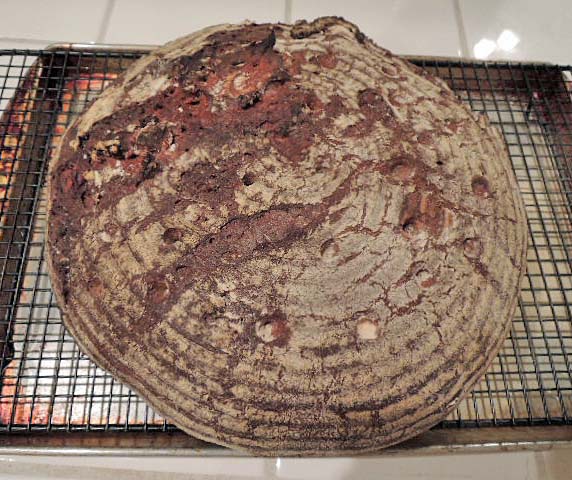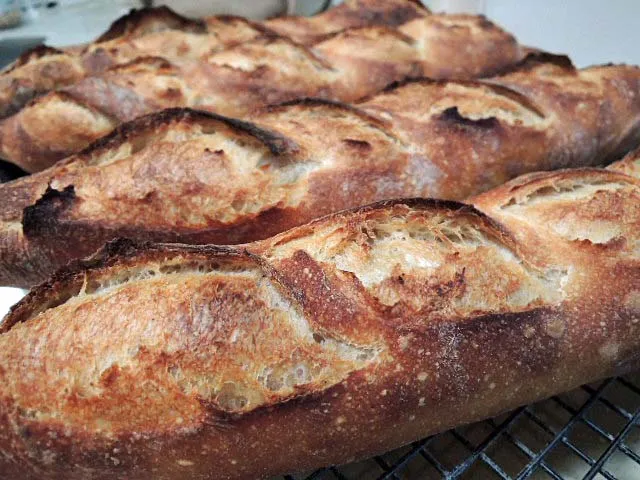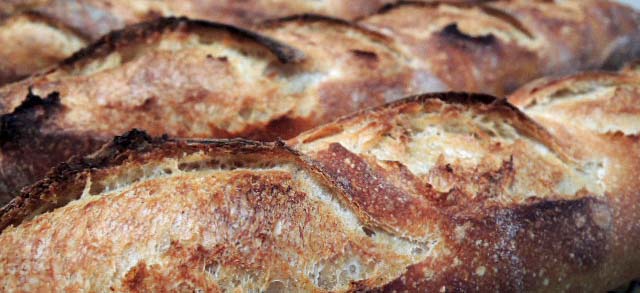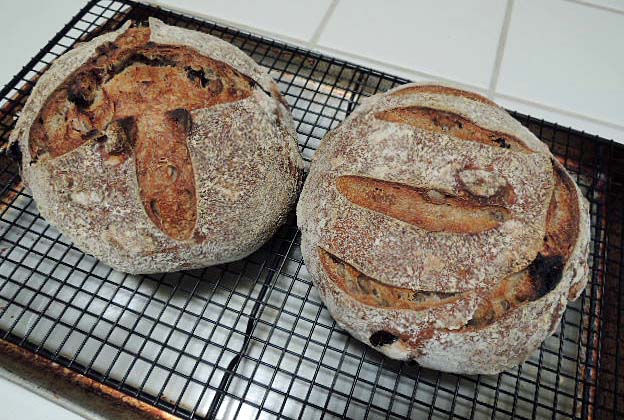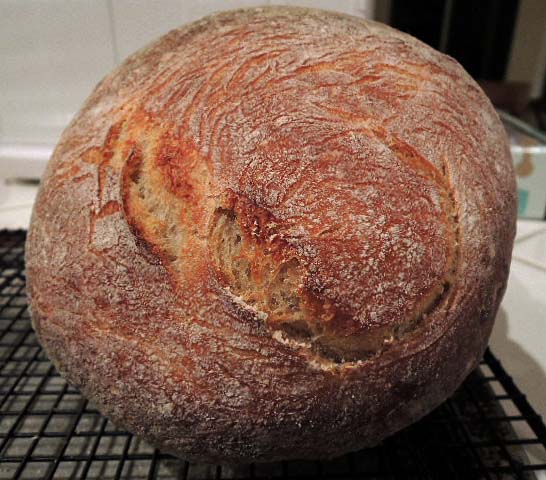Powerless Baguettes
Powerless Baguettes: Not pretty but quite tasty.
April 10, 2013
A couple days ago, my wife pointedly remarked that there were only two baguettes left in the freezer. This was a fair warning, so I built up a liquid levain and made a batch of SJ SD dough. This afternoon, I divided, pre-shaped, proofed, slashed and loaded 4 baguettes in the oven. The timing was perfect to have them out of the oven in time to get to the farmer's market when it opened and then to enjoy fresh-baked baguette with dinner.


